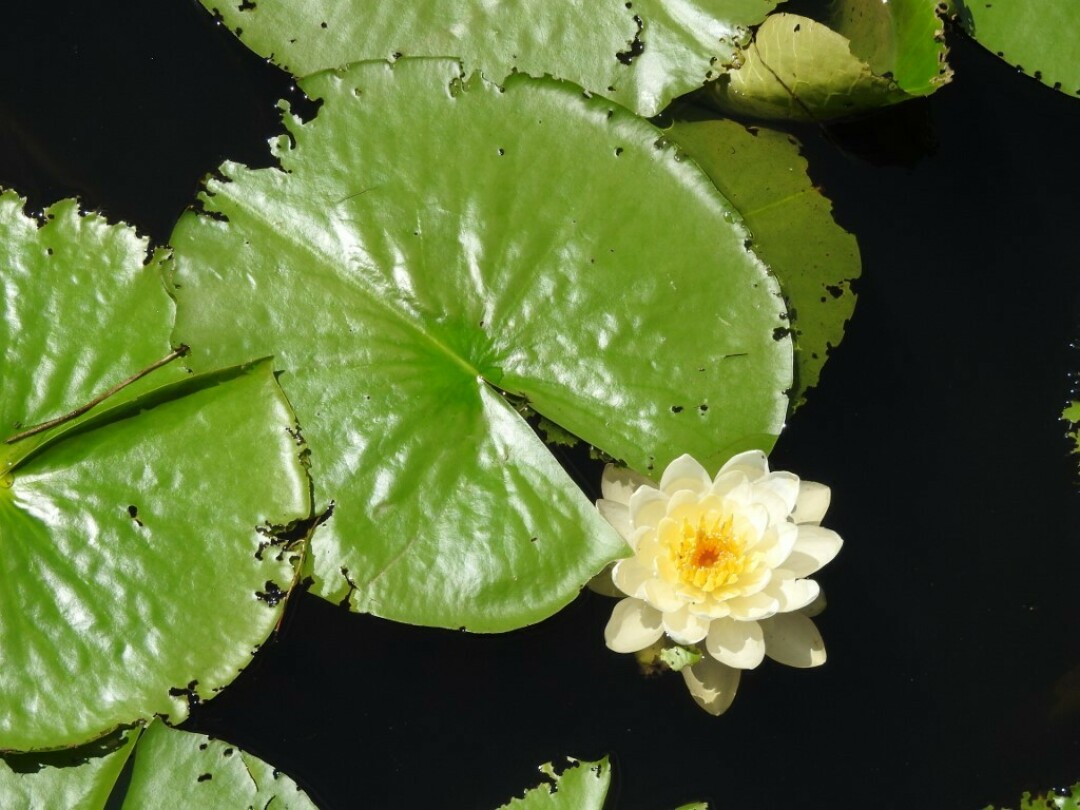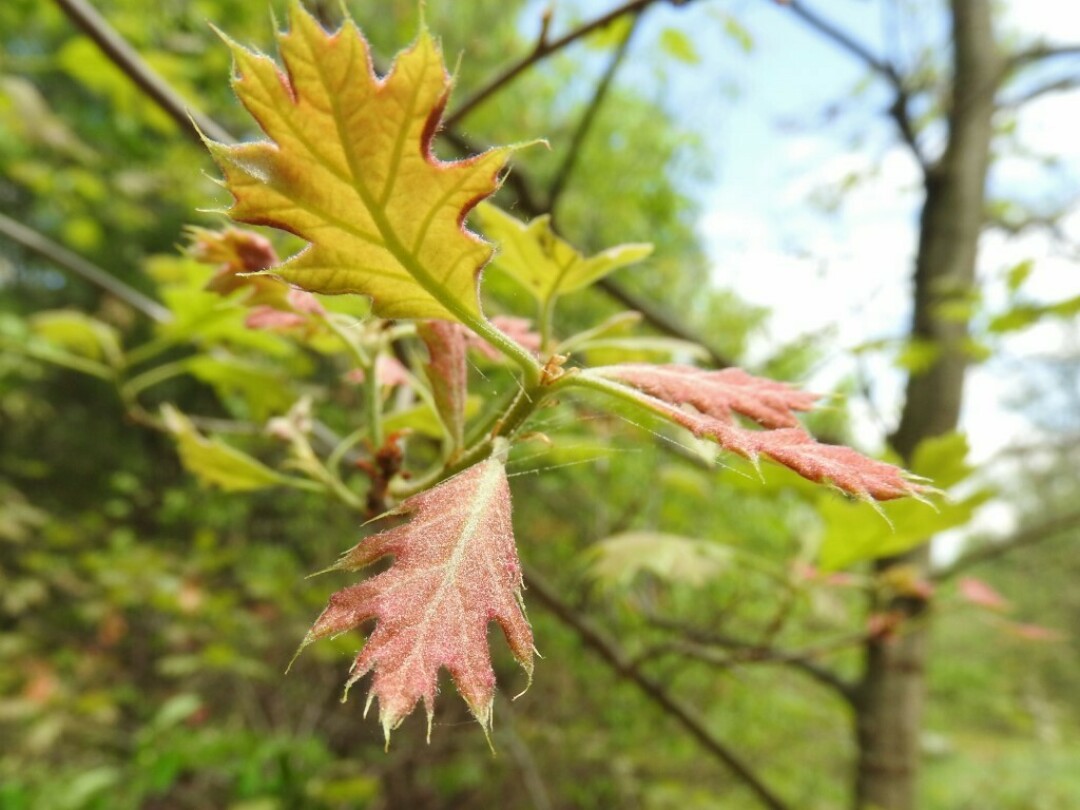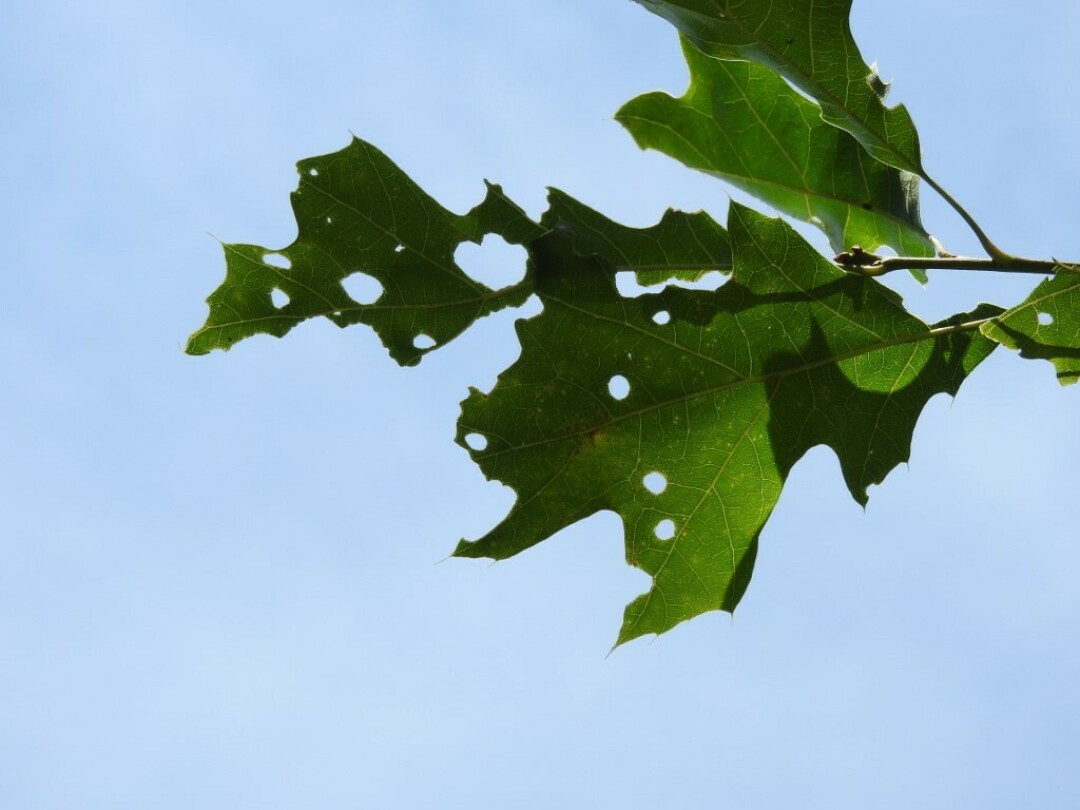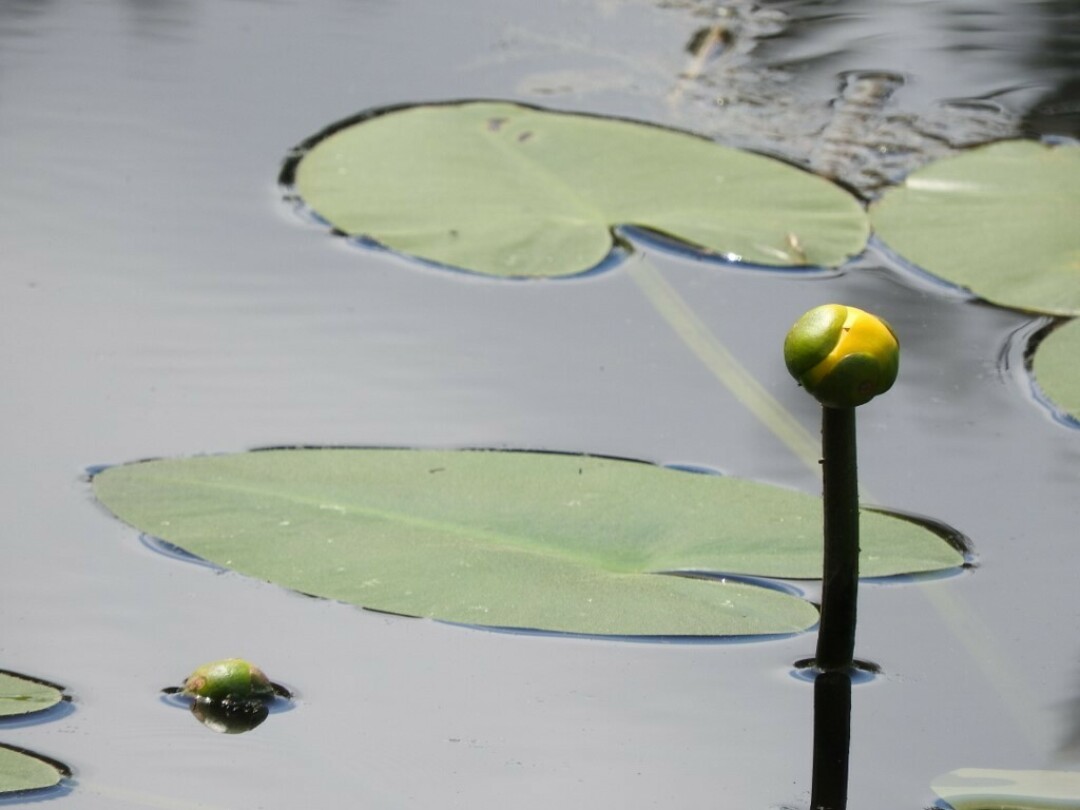News & Articles
Browse all content by date.

The leaves of white water lilies are round with a wedge cut out, and look very similar to our old friend Pac-Man. Photos by Emily Stone.
Behind the Sherman & Ruth Weiss Community Library in Hayward, Wisconsin, there is a half-mile loop trail around a wetland, through a forest, and beside a restored prairie. The level, gravel trail is a favorite spot for dog-walkers and hikers who are out for some fresh air and exercise. It’s a special spot, and the library has often worked with the naturalists at the Museum to help increase peoples’ enjoyment of the trail.
Earlier this summer, the library’s Assistant Director Ann Larson spearheaded a StoryWalk along the trail. You now can read a weather-proofed kids’ book, two pages at a time, as you hike. The library also received a grant to create four seasonal audio guides for the trail. So far, I’ve walked the trail at the peak of spring wildflowers, during the summer heat of July, and as the leaves changed color this fall.
For each of 18 stops, I crafted short narratives, recorded them, and uploaded them to my Natural Connections podcast feed. You can access a link to the Spring Guide (and soon summer, too) on weisscommunitylibrary.com. The link and a QR code, are posted at the trailhead as well, and you can access the library’s Wi-Fi to download the file faster without using data.
For today, while the first snow swirls, I’ll take you back to spring and summer, and give you a little taste of the trail, and how the audio guides build on each other through the seasons.
Stop 3 (Spring): Baby Oak Leaves
The small tree behind the sign post is a northern red oak. If its leaves have started to emerge, you can take a look at how they have lobes with sharp, pointed tips. These tender young leaves need protection. Look closely. Can you see that they are fuzzy? Fuzz helps protect them from the cold, just like your sweater. They might also be red or pink. That color is created by a pigment called anthocyanin, and it’s the same chemical that makes cranberries red and blueberries blue. Anthocyanin is often described as a “sunscreen” that protects young leaves from too much sun. This hasn’t been proven unequivocally, though, and the red color may also protect the leaves against insects who want to eat them.

When red oak leaves emerge in early spring they are covered with fuzz to protect against the cold, and filled with red pigment to protect against the sun and insects.
Stop 3 (Summer): Oak Leaves
The small tree behind the sign post is a northern red oak—a native tree. Take a look at how the leaves have lobes with sharp, pointed tips. In the spring, these leaves were covered in fuzz and contained red pigment and phytoncides to help protect them. Did it work? You might notice some holes in the leaves, or ragged edges, or even lumps called galls. Oak trees feed over 500 species of caterpillars and countless other insects, too. Are the insects destroying the tree? Well, no. The tree still has plenty of leaves to make food for itself, and all of those insects are making food for the birds. A single family of chickadees with five chicks eats between 6,000 and 9,000 caterpillars in a single summer! Planting native plants like oak trees is a great way to support wildlife in your yard. Read more about it in a book called Bringing Nature Home: How You Can Sustain Wildlife with Native Plants by Doug Tallamy. Now, if only there was a place nearby where you could go to find books …

By mid-summer, oak leaves often look tattered and torn due to the hundreds of species of insects who call them lunch.
Stop 4 (Spring): Wetland Habitat
Take a walk out onto the Observation Pier. What do you see? Who do you hear? Red-winged blackbirds are one of the very first birds to return in the spring. Male red-winged blackbirds like to perch on a cattail stalk and flash their red-and-yellow shoulder patches while they sing “konk-la-ree!” Farther south, red-winged blackbirds don’t have to migrate at all. Our blackbirds need to go just far enough south to find crop stubble with waste grain and weed seeds not buried by snow. This is about a 700-mile trip. You may also see a small, gray bird that bobs its tail and darts off a perch to catch insects. Flycatchers are long-distance migrants, and fly all the way to Central or South America for the winter. That’s 4,000 miles! They can’t return north until there are flying insects for them to catch.
Speaking of flying insects, do you see any big dragonflies? Common green darner dragonflies migrate south for the winter, too! Once they get to Texas or Mexico, they lay eggs that hatch and develop into nymphs and then adults. It’s the new dragonflies who fly back north in the spring.
Stop 4 (Summer): Water Lilies
Walk out on to the Observation Pier. Two types of water lilies add both beauty and habitat in the pond. It’s easy to identify them by either their flowers or their leaves. White water lilies have many white petals. They look lacey and elegant. The leaves of white water lilies are round, with a triangular notch. Many people look at that shape and think of the old arcade game Pac-Man. Yellow water lilies are also called spatterdock or bullhead pond lily. They have just six petals that are bright yellow, sometimes with green on the outside and red on the inside. Yellow water lily leaves are heart-shaped instead of round. Can you see leaves of both species in the pond?

Yellow water lily leaves are somewhat heart-shaped.
No matter what the shape of their leaves, water lilies face a challenge. Their rhizomes, which are horizontal stems the size of your arm, are rooted to the bottom of the pond in muck that holds little oxygen. But plants only need carbon dioxide, right? Wrong. Plants do need carbon dioxide in order to make sugar during the process of photosynthesis. But in order to use that sugar to live and grow, plants need oxygen for respiration, just like we humans. So, water lilies have devised a neat system to get oxygen down to their roots. Young leaves take up oxygen into tightly packed air spaces of young tissues. The air moves through spongy cells in their stems. Older leaves, which have looser cells, with tatters and tears, release oxygen into the atmosphere. Since they are all connected to the rhizome, oxygen moves into young leaves, down through the rhizome, and out the old leaves—bringing life to the rhizome on its way. Pretty smart, eh?
Stop 8 (Summer): Quaking Aspen
At this intersection you’ll see a medium-sized tree with pale bark and heart-shaped leaves. This is a quaking aspen. Even if there’s only a slight breeze, the leaves will tremble. Most leaves have round stems, and this allows the tree to hold them at the best angle toward the Sun. Quaking aspen leaves have stems that are flattened in cross section. This makes them strong in one direction, and flimsy in the other. Any breeze sets them trembling.
But how could that be good for the tree? For starters, the twisting leaves seem to “dump the wind.” By moving out of the way instead of resisting, the leaves won’t be torn off the tree in a storm. Another benefit is that the motion helps the leaves get enough carbon dioxide, and makes sure that they don’t get too much sunlight. Some of that extra sunlight might hit the trunk of the tree instead, where additional photosynthesis can take place. One study even suggested that the wiggling leaves are less prone to insect damage than leaves that hold still. Can you imagine why that might be true? How do you think that compares to the chemical defenses of an oak leaf?
I hope you’ll consider taking a guided walk on the Library Nature Trail during all four seasons. Right now, you could just imagine what it looked like in spring and summer, and by this winter, I will have all four audio guides ready to go. We are grateful to the C.D. Besadny Conservation Fund of the Natural Resources Foundation of Wisconsin for their financial support of this project.
Emily’s award-winning second book, Natural Connections: Dreaming of an Elfin Skimmer, is now available to purchase at www.cablemuseum.org/books. Or order it from our friends at redberybooks.com to receive free shipping!
For more than 50 years, the Cable Natural History Museum has served to connect you to the Northwoods. The Museum is now open with our brand-new Mysteries of the Night exhibit. Connect with us on Facebook, Instagram, YouTube, and cablemuseum.org to keep track of our latest adventures in learning.
| Tweet |


